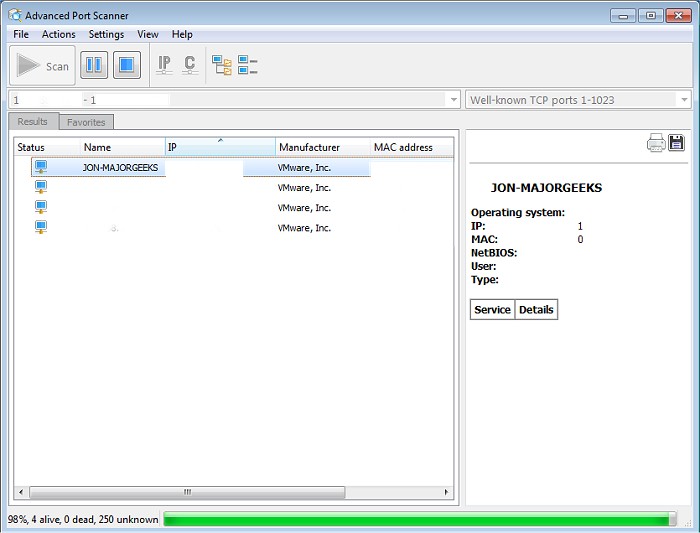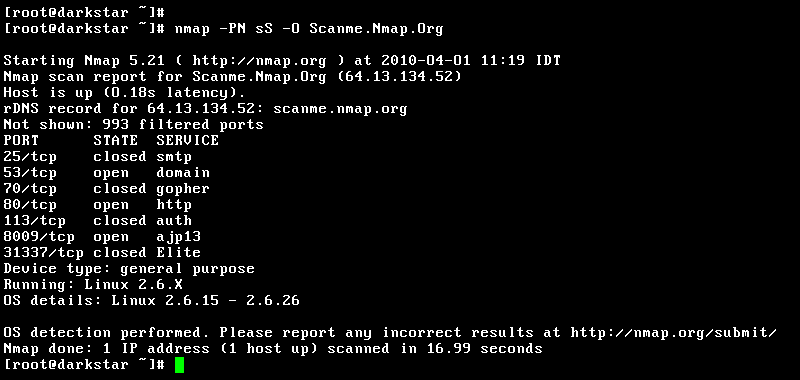

The major drawback of UDP scan is the scan is slow. If the port is open, the packet is accepted, and no response packet is sent. The port is considered as closed if the scanner receives the ICMP port unreachable error. UDP scan: UDP scan sends the UDP packet to every port in the scope of the scan. The disadvantage of this scan is it can be detected easily as it connects to each port. This method is faster than other methods mentioned in this article. If the port is closed the response from the remote host will be RST packet.

The scanner complete the connection by sending the ACK packet. If the remote port responds with a SYN-ACK packet, that means the port is open. In this scan, the attacker sends a SYN packet to the remote port. If the port is listening, connect() will succeed.

TCP Connect or Vanilla scan: In the connect scan, the OS sends the connect() system call to remote host. If no response is received after multiple tries, the scanner marks the port as filtered. open while an RST (reset) indicates the port is not listening i.e. The SYN-ACK packet from the target port indicates the port is listening i.e. In this scan, the scanner sends a SYN packet to initiate a communication and wait for a response. TCP SYN scan: SYN scan is also known as half-open scanning as it doesn’t connect completely to the port. Let’s look into each scan type in detail. There are multiple port scanning techniques available. These ports lie in the range of 1024-49151. Registered ports: These ports are associated with certain protocols or application.Well known ports: These ports are in the range of 0-1023.There are total 65536 ports each for TCP and UDP protocol which are divided into three ranges: Filtered port: There is no reply from the remote host.Closed port: The remote host sends a response indicating the connection is denied.Open port: The remote host sends a response to accept the connection.


 0 kommentar(er)
0 kommentar(er)
